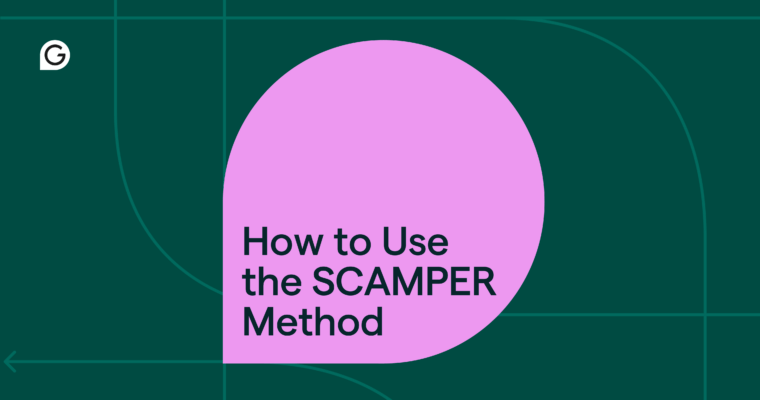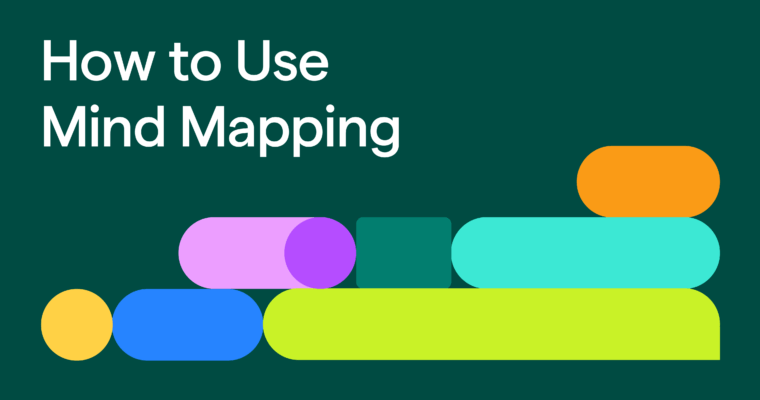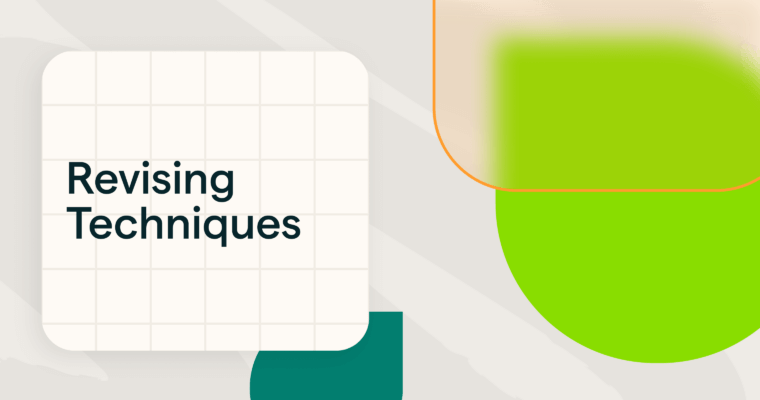
Key takeaways
- A brainstorming session is a structured group activity focused on generating and exploring ideas collaboratively.
- Effective sessions combine focus, structure, and freedom. These lead to more creative and actionable outcomes.
- Brainstorming benefits include stronger team alignment, faster idea generation, and a wider range of perspectives.
- Brainstorming works across contexts. Whether you’re planning content, developing products, or outlining a story, collaborative brainstorming brings diverse perspectives together to explore ideas and resolve challenges.
You’re on a deadline and need ideas fast. The team gathers, coffee in hand, but silence fills the room—or worse, one or two voices dominate while everyone else tunes out.
Brainstorming sessions shouldn’t feel like that. When facilitated well, they’re one of the most energizing ways to collaborate and create.
A brainstorming session is a structured approach to group ideation. It combines open creativity with practical steps to ensure that everyone’s ideas are heard, refined, and given the opportunity to influence the session’s result.
In this guide, you’ll learn what a brainstorming session is, why it works, how to lead one effectively, and how tools like Grammarly can help you transform big ideas into polished outcomes.
Table of contents
- What is a brainstorming session?
- Why use brainstorming sessions?
- How to run a brainstorming session step by step
- Brainstorming session examples
- Best practices for brainstorming sessions
- Common mistakes to avoid in brainstorming sessions
- How Grammarly can support brainstorming sessions
- Brainstorming session FAQs
What is a brainstorming session?
A brainstorming session is a meeting where participants work together to generate, share, and refine ideas related to a shared goal. Unlike casual discussion, a brainstorming session follows a defined structure that balances open creativity with clear objectives.
Sessions can take many forms depending on team size, goals, and the strategies the group opts to use. Common strategies used in brainstorming sessions include:
- Free association: Participants call out suggestions in this strategy for quick idea sharing.
- Silent brainstorming: Everyone writes ideas privately, then discusses them as a group.
- Round robin: Each person takes turns contributing to the conversation, developing each other’s ideas.
- Visual brainstorming: The group maps ideas on whiteboards or diagrams, creating a visual representation of the conversation.
- Digital brainstorming: Using shared documents or whiteboard apps to collaborate remotely, the group brainstorms in pursuit of a goal.
There are many brainstorming methods to choose from, including mind mapping, brainwriting, and starbursting. The key is choosing one that fits your group’s dynamics and goal.
Whether you’re a student exploring a research question, a marketer planning a campaign, or a fiction writer developing a plot, brainstorming sessions can turn scattered thoughts into structured, creative solutions.
Why use brainstorming sessions?
A well-run brainstorming session is more than a meeting; it’s a creativity engine. It boosts group participation, exposes new perspectives, and creates alignment between participants before they dive into a project. There are a lot of benefits to running a brainstorming session before you start a collaborative project, including:
Encourages collaboration and participation
Brainstorming gives everyone an equal voice, regardless of seniority or communication style.
Example: In a 30-minute content meeting, team members from the writing, design, and SEO teams each contribute unique angles that shape the final strategy.
Surfaces new perspectives
A diverse set of voices brings fresh insights that might never emerge in isolation.
Example: During a product campaign brainstorm, a developer highlights a user frustration the marketing team hadn’t considered. That detail shapes the campaign’s hook, leading to a successful campaign that meets users’ biggest pain point.
Combats creative blocks
Structured sessions break mental ruts by introducing prompts, variety, and time limits.
Example: A novelist struggling with a story ending joins a group brainstorm using the round robin strategy. Within minutes, they have three new plot possibilities.
Learn more about how thinking outside the box can keep creativity flowing.
Strengthens problem-solving and alignment
Brainstorming clarifies goals early so the team agrees on what success looks like.
Example: A brand team aligns on campaign themes in one session, cutting weeks off their usual planning timeline.
How to run a brainstorming session step by step
Follow these seven steps to lead a session that’s creative, inclusive, and productive.
Step 1: Define the problem or goal
Start by writing a focused prompt or question. Avoid vague instructions like “Any ideas?” Instead, frame the challenge clearly. For example, ask a question like “What topics should our Q1 blog series cover?”
Facilitator script: “Our goal is to identify five potential blog topics for next quarter. Let’s focus on our audience’s biggest challenges.”
A specific question keeps ideas aligned and actionable.
Step 2: Set ground rules
Establish psychological safety and expectations. Examples of ground rules include:
- No criticism or dismissive feedback.
- Encourage quantity over quality.
- Build on others’ ideas using “Yes, and …” thinking.
Facilitator script: “There are no bad ideas. Let’s aim for lots of options first; evaluation comes later.”
Ground rules reduce hesitation and increase participation.
Step 3: Choose a brainstorming method
Pick a structure suited to your team and context. Common structures include:
- Free association: This involves rapid, verbal idea sharing.
- Silent brainstorming: Each person writes ideas privately first.
- Brainwriting: Participants write ideas and pass them on to others to expand.
- Mind mapping: Ideas branch visually from a central theme.
- Starbursting: Focus on questions rather than answers.
Use shared brainstorming tools to support either in-person or remote sessions.
Step 4: Facilitate idea generation
Set a timer for 5 to 10 minutes and encourage free flow of ideas without editing.
Facilitator script: “We’ll spend the next 10 minutes generating as many ideas as possible. Quantity first!”
Example: A remote marketing team uses a digital whiteboard and produces 40 content ideas in one round.
Step 5: Cluster ideas into themes
Once you have a long list of ideas, group similar ideas and label each cluster.
Example: A product team sorts 30 suggestions into “quick fixes,” “feature ideas,” and “user experience improvements.”
Clustering highlights common threads and helps you spot standout directions.
Step 6: Evaluate and refine
Discuss which ideas best fit your goal, timeline, or audience. Try voting or scoring for feasibility and impact.
Example: A marketing team votes on the three top content ideas to move forward, assigning one to each writer.
Evaluation transforms creative energy into a plan.
Step 7: Set next steps
Turn decisions into action before the session ends.
Facilitator script: “We’ll draft briefs for the top three ideas by Friday and review next week.”
Follow-through ensures great ideas become real projects.
Brainstorming session examples
Example 1: Academic project selection
Scenario: Environmental studies students must agree on a shared research topic before they can move forward with their group project.
Method: Round robin brainstorming
Outcome: After sharing and grouping ideas, the team chooses “urban heat islands” as their capstone focus. Round robin brainstorming helped them reach this conclusion by creating a platform where each student could build on the previous contributor’s idea. This stress-tested multiple ideas, helping the students determine which had the most potential to become a fleshed-out capstone project.
Example 2: Marketing campaign planning
Scenario: A content team contracted by a local real estate brokerage brainstorms Q3 campaign topics.
Method: Silent brainstorming via a shared doc
Outcome: In 15 minutes, they generate 60 ideas and select five aligned with goals and SEO opportunities. Some of these ideas are seasonal, while others are evergreen. With both kinds of ideas represented, the team is able to put together a calendar that highlights seasonal topics at appropriate times and relies on evergreen content between these posts.
Example 3: Creative collaboration for fiction writers
Scenario: A writing group codevelops stories for a horror anthology they plan to self-publish.
Method: Mind mapping with collaborative handoffs
Outcome: Writers link character arcs and settings, which takes the ideas in unexpected directions that amplify the creepy and absurd factors in their stories. As a result, the group produces a more cohesive, engaging final collection that is called “this year’s most innovative horror collection” by a renowned influencer.
Best practices for brainstorming sessions
- Set a specific prompt. A clear focus keeps discussions productive.
- Time box each round. Short bursts maintain energy and creativity.
- Include diverse voices. Invite participants from different roles for richer ideas.
- Use shared visual spaces. Seeing all contributions at once reveals connections.
- Document everything. Capture notes in a shared file and assign follow-up tasks.
Common mistakes to avoid
- Criticizing ideas too early. Early judgment limits creativity. Allow everybody to express their ideas first, then apply constructive criticism to them in the next step.
- Starting with vague prompts. Unclear direction leads to weak ideas. Begin the session with a focused prompt that keeps the group on task.
- Allowing dominant voices. Balance participation by moderating airtime for each participant. This prevents individual voices from being drowned out.
- Skipping review or clustering. Without structure, ideas get lost. Take detailed notes that illustrate the relationships between ideas.
- Treating brainstorming as a one-time event. Follow-ups drive results. Schedule a second session to dive deeper into the ideas from the first session.
How Grammarly can support brainstorming sessions
Grammarly helps you turn creative sessions into clear, actionable plans. Take a look at the ways Grammarly can support your brainstorming session at each stage of the process.
- Before brainstorming: Use Grammarly to refine your prompt and clarify tone so participants know what to expect.
- During brainstorming: Capture ideas in a doc for real-time grammar and clarity support.
- After brainstorming: Ask Grammarly to organize, edit, and identify themes.
- Next steps: Use Grammarly’s Expert Review and outlining features to strengthen your best ideas and shape them into professional drafts.
Brainstorming session FAQs
What is the purpose of a brainstorming session?
A brainstorming session helps teams generate and refine ideas collaboratively, promoting creativity and alignment before execution.
How long should a brainstorming session last?
Typically, a brainstorming session takes 30 to 60 minutes. This is usually a good amount of time to explore ideas without losing momentum.
Can brainstorming work for remote or hybrid teams?
Yes. With digital collaboration tools and clear structure, remote teams can brainstorm effectively and asynchronously.
Do you need experience to lead a brainstorming session?
No. Anyone can facilitate by following these simple steps: Define your goal, set ground rules, choose a brainstorming method, and document the results.
What happens after a brainstorming session?
Cluster, evaluate, and prioritize ideas, then assign the next steps or create outlines for development.






